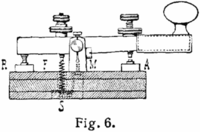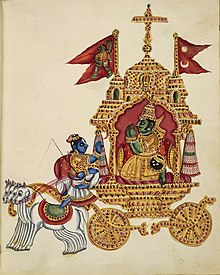.jpg) |
| Madanmohan Jiu Temple, Samta (pix credits Wikipedia) |
It was summer and it was June.
Everyone, we talked to, dissuaded us from travelling in this sweltering heat.
It is definitely uncomfortable. But we were bored with life in the city. We
needed some fresh air and a change from the day in and day out trundle.
After pondering over different
destinations, the time at our disposal and the money involved, we zeroed in on
Deulti. Deulti is one of the oldest stations of Bengal Nagpur Railway. It was
built in 1890. One can reach the place by train from Howrah. It is also
accessible by car. It is a drive of around one and half hours from Kolkata.
There are places to stay at Deulti. One can find them on the internet.
We started early in the morning. We
drove along the Jessore Road, crossed the Nivedita Bridge and took the Kona
Expressway till we came onto the Bombay Road or the NH6. At Bagnan we asked our
way around and learnt Deulti was 4kms ahead. From the crossing of Deulti we
turned right to Mellock and were greeted by a statue of the famed novelist
Sarat Chandra Chattopadhyay. Deulti station was to the left of the crossing. We
booked ourselves into a resort.
After breakfast, we set out for
Sarat Chandra Kuthi, the house of Sarat Chandra Chattopadhyay. It is a two
storied Burmese style house. When it was built, the river Rupnarayan used to
flow right outside the window of Sarat Chandra’s study. Now the river has
changed course and has moved far away. The house was destroyed in the floods of
1978. The Zilla Parishad repaired it. It has now been declared a heritage site.
In front of the house is the village pond which had been immortalized by the
great novelist in “Palli Samaj”and other writings.
 |
| Sarat Chandra's house at Deulti (pix credits Wikipedia) |
Sarat Chandra was born into
abject poverty in Devanandapur, in Hoogli district in West Bengal. They were
four siblings. His eldest sister Anila Devi was married in the village of
Samtaber. Sarat Chandra used to frequent this place. The serene, tranquillity of the place on the
banks of the river Rupnarayan fascinated him. When he returned from Burma and
settled in Calcutta Sarat Chandra bought a piece of land near Anila Devi’s and
built a house for himself. He lived here till his death, with his wife and his
brother Swami Vedananda.
We left the house and walked to
the banks of the river Rupnarayan. The river is famous for the Ilish or Hilsa fish
that abound in it. It is a popular Bengali cuisine. The river starts in the
foothills of the Chhoto Nagpur plateau northeast of the town of Purulia. It
flows south east past Bankura, where it is known as Dwarakeshwara. In the town
Ghatal it is joined by the river Silai. The Rupnarayan finally flows into the
river Hoogli. At Kolaghat, on its banks, is the West Bengal Power Development
Corporation Limited (WBPDCL) power plant.
Deulti has a regular flow of
tourists throughout the year. Kolaghat is nearby. One can also go to Garchumuk
and Gadiara. Here the summers are tough. During monsoon the Rupnarayan floods
its banks. It is better to come here in winter.
 |
| Traditional preparation of jaggery, Samta (pix credits Wikipedia) |
Ma Shitala temple, the temple of
Baba Lokenath, the temple of Lord Shiva at Shibtala and the temple of Ma Chandi
at Shubho Chandi Tala are the other famous temples in and around Deulti. These
temples have initiated a lot of myths around them.
The rains came late in the afternoon.
They were accompanied by thunder and lightning. The unbearable heat of the day
was gone. As evening set in the rain came to a stop. The climate cooled down.
Our journey back was comfortable. We enjoyed ourselves thoroughly. We were
refreshed and ready to face the following week’s work. The short tour added to
our knowledge of history. We came face to face with our tradition.






